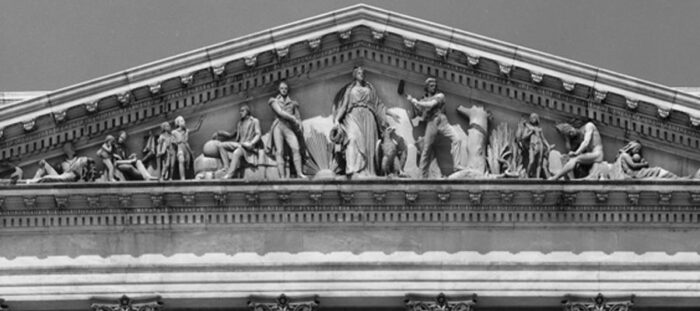
A month ago, I began writing about the state of the Capitol in the mid-19th century, starting with a look at the state of the floor at the time Charles Dickens visited. The Capitol was, doubtlessly, far less clean than it is today. It was also, as we will see today, far more of a public space as well.
This fact became especially true with the move of the House of Representatives to their new chamber in 1857. While there had been some suggestions that the old space be used for artwork, the legislation formalizing this decision would be some time in coming.
In the meantime, the space was used and abused in a variety of ways– usually by man, but occasionally by nature as well. The first indignity came even before the House had begun using their new space. On June 21, 1856, a hailstorm came roaring through Washington, leaving massive destruction in its wake. In their next issue, the Weekly National Intelligencer reported that the “floor of the old hall of Representatives is covered with fragments of the broken glass; but, strange to say, the chandelier appears to have been uninjured by the falling panes.”
Six months later, the move occurred, an event the Washington Union marked thusly: “Many proud and sad memories will remain enshrined amid the fair proportions and the noble columns and the swelling dome of the old hall.” People were quick to take advantage of the newly empty space: the Columbia Institution for the Instruction of the Deaf and Dumb and the Blind demonstrated how instruction proceeded at their school–now less problematically and more succinctly named Gallaudet University. Colonel William Emmons of Massachusetts would set up shop to sell copies of his brother Richard’s poems. There seems to have been some confusion between which brother was the poet, and which the publisher, with the Washington Union conflating the two. That’s Richard’s likeness, above.
The following year, the old furniture that had been used in the Hall was sold at auction. While most desks went for $5 or 6, the one used by John Quincy Adams went for the princely sum of $50. That would be about 1500 in today’s dollars.
Over the next years, as discussion continued about what to do with the hall – with suggestions including turning it into the House library – the space was used for such disparate tasks as billeting 500 soldiers from Pennsylvania and exhibiting the sculptures that were to be installed on the pediment on the east front of the new Senate wing.

Finally, in January 1864, Vermont Representative Justin Smith Morrill submitted a resolution calling for a report “on the expediency of setting apart the old hall of the House of Representatives for statuary.” This resulted in a joint resolution reported on April 19, 1864, which stated that the old Hall was “now worse then uselessly occupied as a place of storage and traffic.” In the ensuing debate, the true state of affairs of the old chamber would come to light.
Next week: What it looked like.
I will be giving a virtual talk on Murder on Capitol Hill this Wednesday for the Capitol Hill Restoration Society. Click here for more information.
